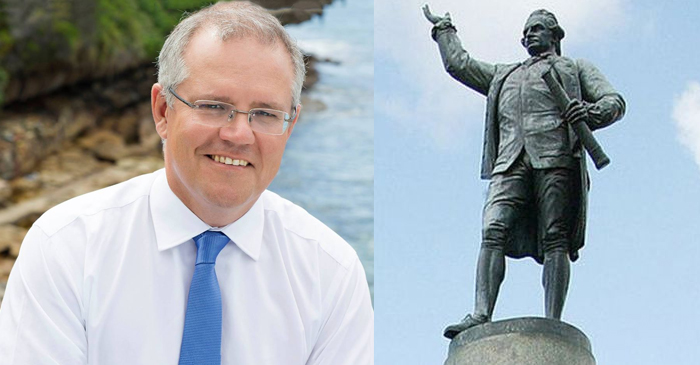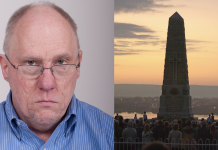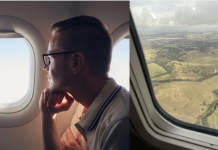
CLANCY OVERELL | Editor | CONTACT
Federal Treasurer and prominent white Sydney man, Scott Morrison has announced will allocate $50 million of taxpayer money to recognising the unknown Englishman Captain Cook who stumbled across Botany Bay, Sydney, after 52 disinterest other colonial seafarers.
The redevelopment of the Captain James Cook memorial will include a new visitors centre, cafe, exhibition space and ferry wharves as well as an “aquatic monument” to Cook that will be completed ahead of the 250th anniversary of the first encounter between Cook and Australia’s first peoples on April 29, 1770.
Morrison, whose electorate of Cook includes the precinct, told the paper that the redevelopment would deliver “a place of commemoration and recognition and understanding of how cool Captain Cook was”
“This will be our very own Statue Of Liberty, except it will be a bit more tailored to the history of this country, in that, it’s going to be recognising our greatness through a statue of a white male aristocrat”
Morrison has been quick to preface his plans by saying any complaints from leftie historians who say that he has his timelines wrong will be redirected to the Minister For Indigenous Affairs, who’s name escaped him at the time.
The public has already been up in arms about this announcement, with locals pointing out that a statue of Cook is irrelevant, considering the most significant exploration of Australia in the 17th century was by the Dutch. The first ship and crew to chart part of the Australian coast (the west coast of Cape York Peninsular in Queensland) and meet with Aboriginal people was the Duyfken, in 1606, captained by Dutchman Willem Janszoon.
In 1629, the Dutch ship the Batavia made history when it struck coral reefs on the Houtman Abrolhos Islands, 40 kilometres off the Western Australian coast. A failed bloodthirsty mutiny, orchestrated by some of the ship’s crew, resulted in two of the youngest mutineers being sentenced to be marooned on the Australian mainland, effectively making them the first European residents of Australia.
Other explorers of the time included Dirk Hartog and Frederick de Houtman (Dutch), Louis Antoine de Bougainville (French) and William Dampier (English).
In 1642, Dutchman Abel Tasman discovered Van Dieman’s Land, now named Tasmania, before returning on another voyage in 1644, when he passed the coast of Australia naming it Nova Hollandia (New Holland).
It was 51-Europeans later that navigator and astronomer Captain James Cook set out in 1768 on the HM Bark Endeavour. Under direction from King George III of England, Captain Cook was given instructions that “with the consent of the natives to take possession of convenient situations in the country” – which he didn’t do, claiming that no one was here, despite the 60 or so blackfellas telling him to get fucked from the shores.










